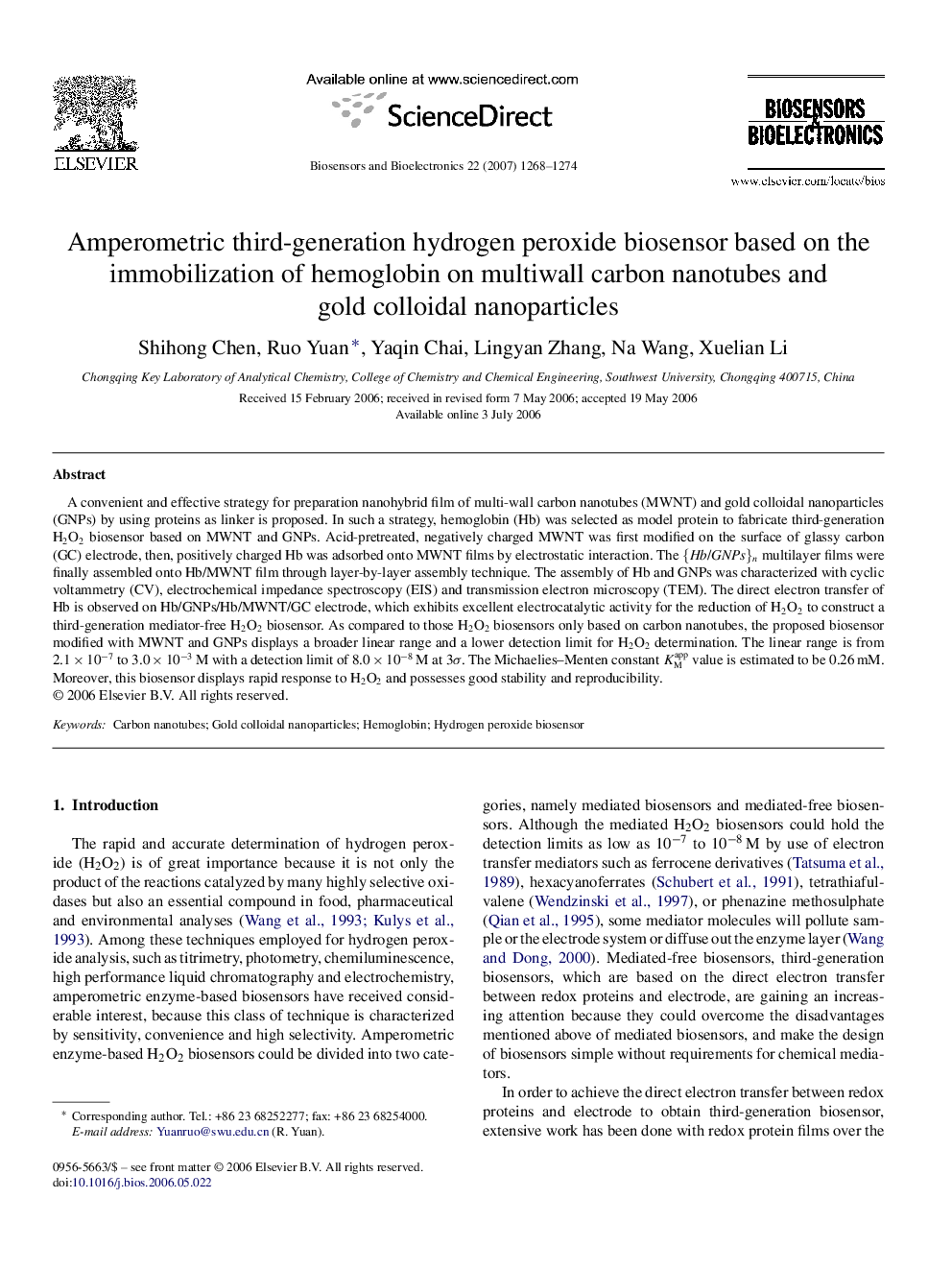| Article ID | Journal | Published Year | Pages | File Type |
|---|---|---|---|---|
| 870198 | Biosensors and Bioelectronics | 2007 | 7 Pages |
A convenient and effective strategy for preparation nanohybrid film of multi-wall carbon nanotubes (MWNT) and gold colloidal nanoparticles (GNPs) by using proteins as linker is proposed. In such a strategy, hemoglobin (Hb) was selected as model protein to fabricate third-generation H2O2 biosensor based on MWNT and GNPs. Acid-pretreated, negatively charged MWNT was first modified on the surface of glassy carbon (GC) electrode, then, positively charged Hb was adsorbed onto MWNT films by electrostatic interaction. The {Hb/GNPs}n multilayer films were finally assembled onto Hb/MWNT film through layer-by-layer assembly technique. The assembly of Hb and GNPs was characterized with cyclic voltammetry (CV), electrochemical impedance spectroscopy (EIS) and transmission electron microscopy (TEM). The direct electron transfer of Hb is observed on Hb/GNPs/Hb/MWNT/GC electrode, which exhibits excellent electrocatalytic activity for the reduction of H2O2 to construct a third-generation mediator-free H2O2 biosensor. As compared to those H2O2 biosensors only based on carbon nanotubes, the proposed biosensor modified with MWNT and GNPs displays a broader linear range and a lower detection limit for H2O2 determination. The linear range is from 2.1 × 10−7 to 3.0 × 10−3 M with a detection limit of 8.0 × 10−8 M at 3σ . The Michaelies–Menten constant KMapp value is estimated to be 0.26 mM. Moreover, this biosensor displays rapid response to H2O2 and possesses good stability and reproducibility.
